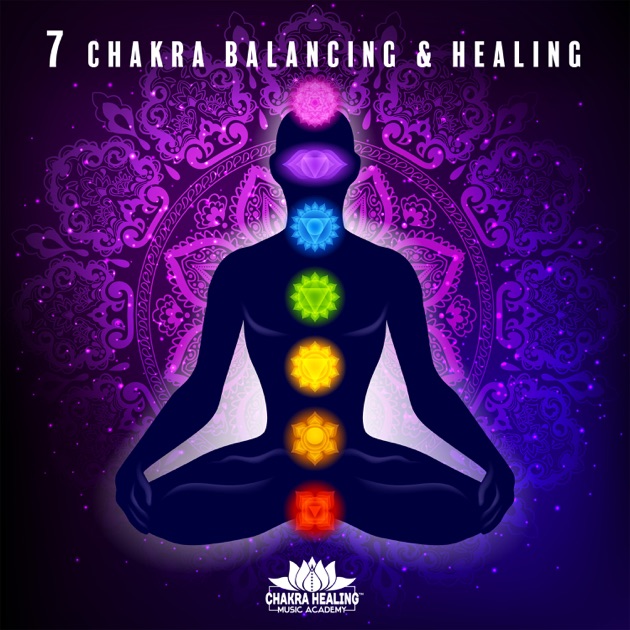
What is chakra healing
The word “chakra” is derived from the Sanskrit word for wheel. In Hinduism and other belief systems, these wheels are centers of energy that reside in different parts of the body.Chakras are energy centers in your body. Seven chakras run along the length of your spine and end at the top of your head. Each of these chakras is associated with a different color and a specific element. If your chakras are out of balance, they can cause difficulties with mood, focus, and overall health.
Each chakra of the body is stimulated with various different frequency. Those frequency trigger to the nerves ultimately stimulating chakras of the body.The basic idea behind the chakra system is that when your chakras are out of balance, it can lead to stress, anxiety, and depression. Therefore chakra healing is necessary in order to manage health condition of our body.
Chakras are 7 energy centers aligned along the spine, each responsible for different physical, emotional, and spiritual aspects of our being. When these chakras are in balance, we experience harmony, vitality, and mental clarity.However, stress, emotional trauma, and environmental influences can cause blockages or imbalances in these energy centers.
Chakra healing goes through the determined process of the demonstration of the raga music with the various combinations of different frequencies combined together. The raga music is the fundamental for the Chakra healing. Chakra healing can be done efficiently only by the indian classical music in the form of dhrupad. As dhrupad music is also the sacred form of music that has the connection with the body, it can directly led to the chakra healing of the people.
Chakra healing through the ancient classical music
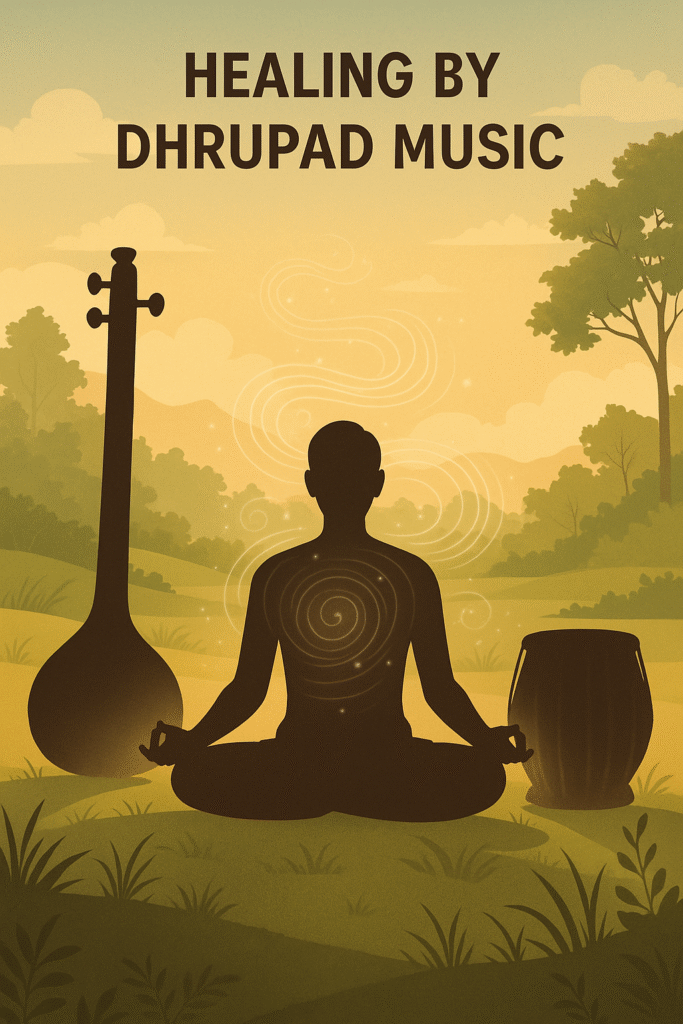
Indian Classical Music, especially in its purest and most meditative form. Dhrupad Music offers a unique and potent method to harmonize these chakras. Dhrupad music, rooted in the Nada Yoga tradition (union through sound), uses the power of raagas (melodic frameworks) and specific tonal frequencies to resonate with the chakras and gradually dissolve blockages.
Each raag in Dhrupad is composed to evoke a specific mood (rasa) and is performed at certain times of the day, aligning it with the body’s natural rhythms. When sung or listened to with awareness and meditative intent, these raagas can activate, balance, or cleanse specific chakras, fostering deep healing on a mental, emotional, and physical level.
How indian classical music (Dhrupad Music) activate the chakras
Indian classical music, and more specifically Dhrupad music, works as a powerful tool for chakra activation because it directly interacts with the body’s energy centers (chakras) through vibrational resonance, emotional expression, rhythmic structure, and subtle frequency manipulation. Dhrupad, being the most ancient and meditative form of Indian classical music, is especially effective in stimulating the chakras due to its depth, purity, and focus on Nada (primordial sound).
1. Vibrational Frequency Resonance
Each chakra is associated with a specific frequency range. Dhrupad vocalizations and the drone of the tanpura create sustained vibrations that resonate with these frequencies.
- Mandra Saptak (lower octave) stimulates lower chakras like Muladhara and Swadhisthana.
- Madhya Saptak (middle octave) activates the Manipura, Anahata, and Vishuddha chakras.
- Taar Saptak (higher octave) aligns with Ajna and Sahasrara chakras.
The slow alap (introductory section) in Dhrupad allows each note to fully unfold and penetrate the listener’s subtle energy body, aligning with specific chakras through vibrational entrainment. The frequency mainly sustained frequency from these kind of music help to trigger the specific chakras of the body balancing the mental state of the body.
2. Use of Specific Raagas (Melodic Frameworks)
Each raag in Indian classical music evokes a unique rasa (emotional flavor). These rasas influence the emotional and energetic state of the listener, directly stimulating the corresponding chakra:
- Raags with stability and depth (like Bhairav) ground the listener, healing the Root Chakra.
- Raags with sensual flow and emotional warmth (like Kafi) activate the Sacral Chakra.
- Raags that are bold and bright (like Deshkar) energize the Solar Plexus.
- Romantic and devotional raags (like Bihag) open the Heart Chakra.
- Mysterious and subtle raags (like Darbari) enhance intuition and spiritual awareness, activating higher chakras.
The use of raag in the raag therapy is the common practice to update the mental well being of the people. For your detailed inspection for effect of different ragas on human body.
3. Breath and Voice Integration in Dhrupad
Dhrupad singing is deeply tied to controlled breathing, vocal placement, and resonance. These elements naturally engage the autonomic nervous system, helping to:
- Calm the mind (ideal for Ajna chakra)
- Regulate breath (Vishuddha and Anahata chakra)
- Improve physical grounding (Muladhara chakra)
The practice of long, sustained notes (aakar) and vocal syllables like “Nom-Tom” aalap stimulate internal vibrations that can be felt physically, especially when sung with intent in meditative focus.
4. Tanpura and Shruti (Microtones)
The continuous drone of the tanpura acts as a vibrational base that stabilizes the nervous system, much like a tuning fork stabilizes the pitch of a string instrument. It:
- Enhances sonic alignment of the voice and body
- Provides a stable frequency field that supports chakra alignment
- Facilitates the practice of shruti sadhana (microtonal tuning), which increases awareness of subtle inner energies
Dhrupad singers often tune themselves to this drone, and listeners can enter deep meditative states by aligning their attention to this drone, encouraging the flow of prana (vital energy) through the chakras
5. Time Theory of Raags and Circadian Rhythm
Indian raag system follows Samay Chakra, where specific raags are sung at specific times of the day. This aligns with the body’s biological rhythms and helps optimize:
- Morning raags (like Bhairav) energize the Root and Solar Plexus chakras.
- Afternoon raags (like Multani) balance the Heart and Throat.
- Evening raags (like Yaman, Bihag) soothe and open higher chakras like Ajna and Sahasrara.
7 chakras of the body: STimulating through classical music form
1. Root Chakra (Muladhara)
- Location: Base of the spine
- Element: Earth
- Emotions/Functions: Survival, stability, grounding, physical identity
- Signs of Imbalance: Fear, insecurity, financial instability, physical ailments in legs and lower spine
It resonates with deep, low-frequency sounds. Dhrupad music, especially when sung in the mandra saptak (lower octave), powerfully activates this chakra by producing vibrations that align with the body’s base energy center. Raags like Bhairav and Malkauns, with their meditative and earthy tones, help release fear and foster a sense of safety and connection to the body and earth. Through focused listening or singing, these raags restore balance and vitality to the Root Chakra, promoting overall physical and emotional stability
Musical Healing:
Low and deep frequencies are ideal to stimulate the grounding energies of this chakra.
Raagas:
- Raag Bhairav: With its grave and meditative nature, Bhairav strengthens grounding and stillness.
- Raag Adana: Builds connection to the earth and physical self when rendered in lower octave (mandra saptak).
2. Sacral Chakra (Swadhisthana)
- Location: Lower abdomen
- Element: Water
- Emotions/Functions: Creativity, sexuality, pleasure, emotional expression
- Signs of Imbalance: Guilt, lack of joy, creative blocks, sexual dysfunction
Musical Healing:
Flowing and emotionally rich raagas help in activating emotional sensitivity and creativity.
Raagas:
- Raag Yaman: Its smooth transitions and expansive nature stimulate creativity and emotional flow.
- Raag Kafi: Known for its sensuous and expressive mood, it helps unlock repressed emotions.
3. Solar Plexus Chakra (Manipura)
- Location: Navel
- Element: Fire
- Emotions/Functions: Confidence, personal power, willpower, digestion
- Signs of Imbalance: Low self-esteem, digestive issues, anger, indecisiveness
Musical Healing:
Fiery and assertive raagas energize this chakra, empowering will and determination.
Raagas:
- Raag Deshkar: Its brightness and boldness stimulate mental clarity and self-confidence.
- Raag Jaunpuri: Enhances strength and inner resolve through firm melodic movement.
4. Heart Chakra (Anahata)
- Location: Center of the chest
- Element: Air
- Emotions/Functions: Love, compassion, empathy, emotional healing
- Signs of Imbalance: Grief, emotional detachment, relationship issues, heart/lung disorders
Musical Healing:
Melodic tenderness and subtle ornamentation help open the heart and foster compassion.
Raagas:
- Raag Bihag: Radiates love, beauty, and serenity.Singing the alap of Bihag in a gentle, sustained way with tanpura support creates an enveloping sound field that opens the Anahata chakra.
- Raag Hamsadhwani: A joyful, light raag that uplifts and expands the heart center.
5. Throat Chakra (Vishuddha)
- Location: Throat
- Element: Ether (Space)
- Emotions/Functions: Communication, expression, truth, self-awareness
- Signs of Imbalance: Fear of speaking, thyroid problems, dishonesty, communication disorders
Musical Healing:
Open, resonant tones and vocal exercises enhance the capacity for truthful expression.
Raagas:
- Raag Todi: Subtle, deep, and expressive, helping one articulate emotions with sensitivity.
- Raag Shuddh Sarang: Clarifies vocal power and clears the space for higher truth.
6. Third Eye Chakra (Ajna)
- Location: Between the eyebrows
- Element: Light
- Emotions/Functions: Intuition, insight, imagination, spiritual perception
- Signs of Imbalance: Confusion, lack of focus, insomnia, disconnection from intuition
Musical Healing:
Mystical and contemplative raagas bring clarity, stillness, and inner vision.
Raagas:
- Raag Darbari Kanada: Deeply meditative and introspective, ideal for stilling the mind. The slow unfolding of Darbari Kanada in Dhrupad creates a trance-like state conducive to meditation and intuitive awakening.
- Raag Lalit: Serene and mysterious, activating the intuitive dimension.
7. Crown Chakra (Sahasrara)
- Location: Top of the head
- Element: Cosmic Energy
- Emotions/Functions: Enlightenment, divine connection, spiritual consciousness
- Signs of Imbalance: Disconnection from spirituality, cynicism, depression, fatigue
Musical Healing:
Transcendental and devotional raagas bring a sense of unity and divine presence.
Raagas:
- Raag Bhairavi: Universally loved and devotional in nature, harmonizes the entire chakra system.
- Raag Marwa: Introspective and subtle, guides the listener to higher states of consciousness.
Chakras, Qualities, Musical notes and Ragas
| Energy center / Chakra | Gross expression and presence in our body | Associated Qualities at subtle level | Indian note | Western note | Associated Ragas |
| Mooladhara | Pelvic plexus, Prostrate, Coccyx | Innocence, wisdom | Sa – Shadjam | C | Hindol, Shyam Kalyan, Hansdhwani / Hamsadhwani |
| Swadishthana | Aortic plexus – Liver, Kidney, Spleen, Pancreas, Uterus | Pure Knowledge, Creativity | Left Swadishthan – Komal Rishabh (Hindustani) or Shuddha Rishabham (Carnatic) | C#, D | Gujri Todi, Yaman / Subha Pantuvarali |
| Center and Right Swadishthan – Shuddha Rishabh (Hindustani) | |||||
| Chathusruthi Rishabham (Carnatic) | |||||
| Nabhi | Solar Plexus, Stomach, Liver | Homely aspects, creative action, Satisfaction, Wealth, Power of Attention | Left Nabhi – Komal Gandhar (Hindustani) | D#, E | Malkauns, Abhogi, Bhimpalas (Hindustani), Abhogi, Bhimpalas, Hindolam |
| Shuddha Gandharam (Carnatic) | |||||
| Center, Right Nabhi – Shuddha Gandhar (Hindustani) | |||||
| Sadharana Gandhara (Carnatic) | |||||
| Anahat | Cardiac Plexus, Heart | Sense of security, fearlessness, Responsible behavior | Left, Center Anahat – Shuddha Madhyam (Hindustani and Carnatic) | F, F# | Bhairav, Ahir Bhairav, Durga (Hindustani) Chakravaham, Mayamaalavagowla, Durga |
| Right Anahat – Teevra Madhyam / Prati Madhyamam | |||||
| Vishuddhi | Cervical Plexus, Throat | Diplomacy, Collectivity, Respect for others | Pancham | G | Jayjaywanti, Desh (Hindustani), Dwijavanti, Desh (Carnatic) |
| Agnya | Optic Chiasma | Forgiveness, Resurrection | Right Agnya – Komal Dhaivat (Hindustani) | G#, A | |
| Shuddha Gandharam (Carnatic) | Bhup (Hindustani), Bageshri, Mohanam | ||||
| Left, Center Agnya – Shuddha Daivat (Hindustani) | |||||
| Antara Gandharam (Carnatic) | |||||
| Sahasrara | Limbic area, crown of the head | Collective consciousness, Integration | Komal and Shuddha Nishad (Hindustani) | A#, B | Darbari, Bhairavi (Hindustani) Darbari Kanada, Sindhu Bhairavi (Carnatic) |
| Shuddha and Kakali Nishadam (Carnatic) |
Nada and Chakra: The Connection Between Subtle Sound and Energy Centers
In the spiritual and metaphysical traditions of India, Nada (नाद) is considered the primordial sound, the vibrational essence from which all creation arises. Derived from the root sounds “na”, meaning flow, and “da”, meaning to give or to resonate, Nada represents the cosmic vibration that sustains life. It is not just an audible sound, but a subtle vibration that exists in every atom of the universe, including the human body.
According to Nada Yoga,the path of union through chakras are subtle energy centers in the human body where this vibrational force can be concentrated, activated, and purified. There are seven main chakras, aligned along the spinal column from the base (Muladhara) to the crown (Sahasrara), each associated with specific vibrations, emotions, elements, and physical functions.
Types of Nada: Gross and Subtle
Nada is classified into two broad types:
- Ahat Nada: The external, struck sound that we hear through the ears, such as musical instruments, voice, mantras.
- Anāhat Nada: The unstruck, internal sound a subtle, inner vibration experienced through deep meditation and self-realization. This is the sound of the heart chakra (Anahat Chakra) and is considered the true Nada that connects one to the Divine.
Chakras as Sound Centers
Each chakra vibrates at a specific frequency and responds to particular sounds, mantras, and musical notes (swaras). The subtle energy body acts like a stringed instrument, where different notes correspond to different centers:
| Chakra | Location | Bija Mantra | Element | Corresponding Swara |
|---|---|---|---|---|
| Muladhara | Base of spine | Lam | Earth | Sa |
| Swadhisthana | Lower abdomen | Vam | Water | Re |
| Manipura | Navel | Ram | Fire | Ga |
| Anahata | Heart | Yam | Air | Ma |
| Vishuddha | Throat | Ham | Ether | Pa |
| Ajna | Third eye | Om (or Aum) | Light | Dha |
| Sahasrara | Crown | Silence | Cosmic | Ni |
Conclusion
In the ancient wisdom of Indian traditions, chakra healing has always been a vital part of aligning the mind, body, and spirit. Among the many tools available for inner harmony, Indian classical music especially the meditative depth of Dhrupad stands out as a profound method for activating and balancing the seven chakras. Unlike modern sound therapies, Dhrupad doesn’t merely soothe; it vibrates deep within the energy system, stimulating and harmonizing each chakra through its precisely tuned swaras (notes), rich tonal textures, and spiritual intent.
Chakra healing through Dhrupad is not just a musical experience; it is a sacred journey into self-awareness. Each raga is connected with specific time cycles and emotional states, and when performed with the right intention and discipline, it can open blocked chakras and restore energetic flow. The alap in Dhrupad slow and deeply introspective—guides listeners into a meditative state, aligning the chakra system naturally with the vibration of nāda (primordial sound).
Today, as people seek more holistic ways of healing, chakra healing through Dhrupad offers an authentic and time-tested path. It reconnects us to our roots, helping us transcend physical and emotional imbalances. Unlike commercialized forms of sound healing, this ancient art doesn’t rely on instruments alone it relies on naad brahma, the sacred sound current, transmitted through voice, intention, and consciousness.
Those who have experienced chakra healing through Dhrupad often describe a deep sense of clarity, emotional release, and spiritual awakening. In an age where noise is constant, Dhrupad provides the silence within the sound ,the very essence of chakra healing. This tradition is not just therapy; it is transformation.

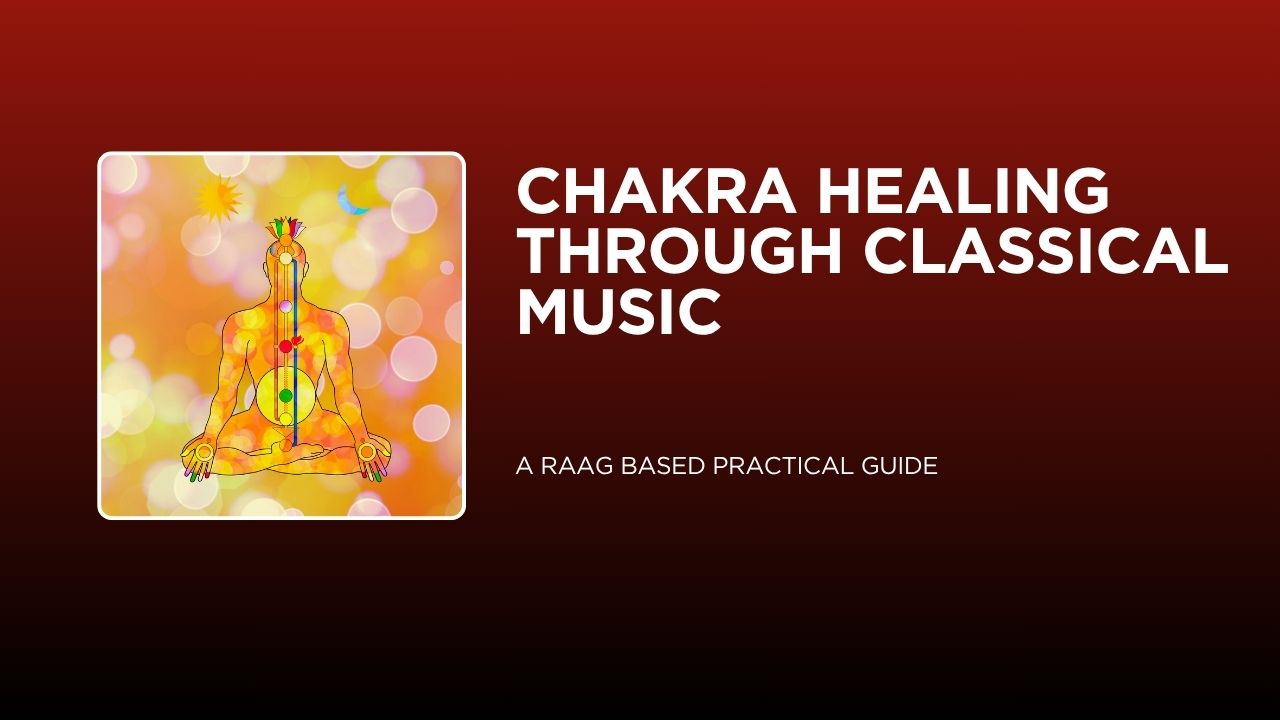
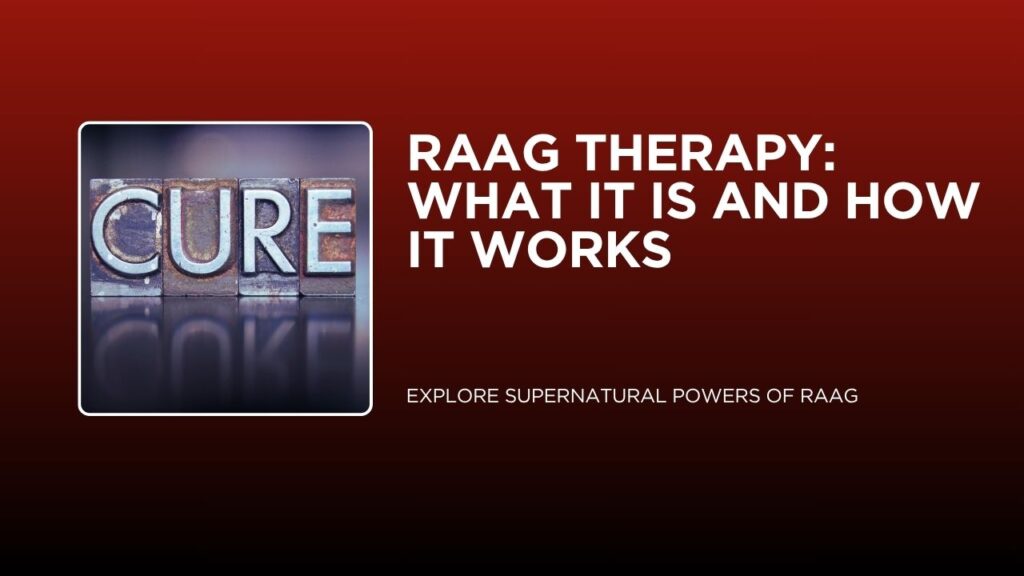
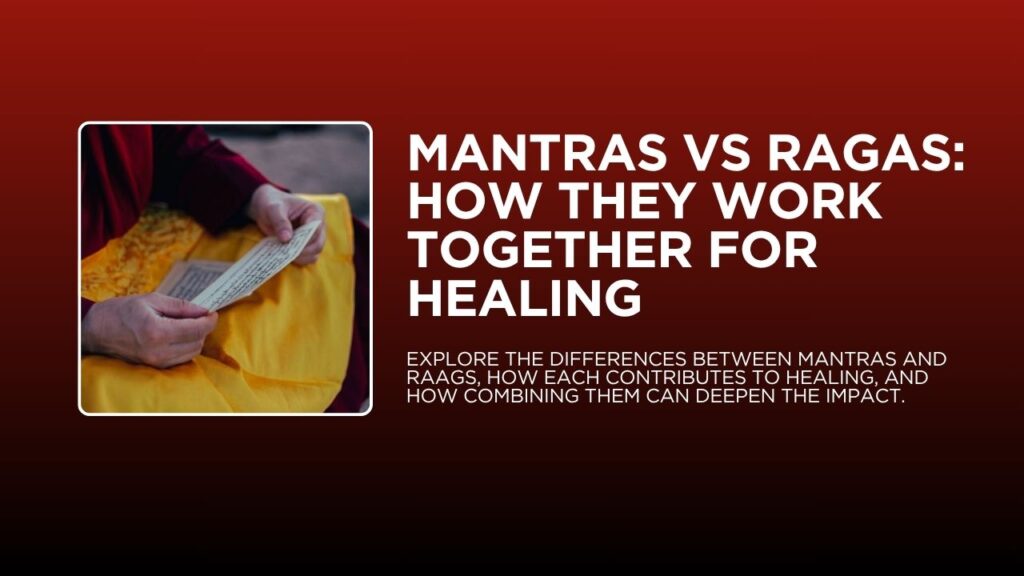
Pingback: What is the Sonic Alignment Technique? A Practise to align mind and body - Manasukh Dhvani